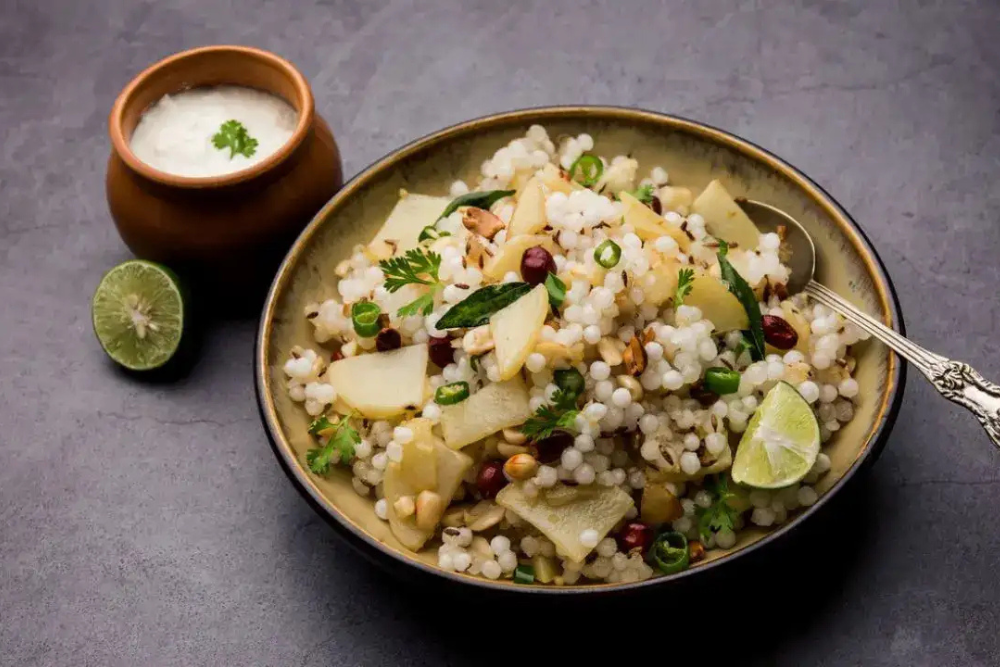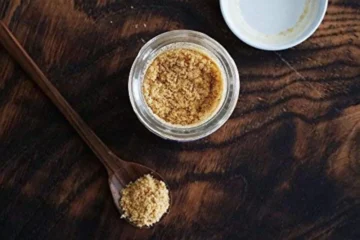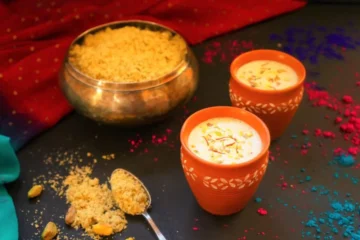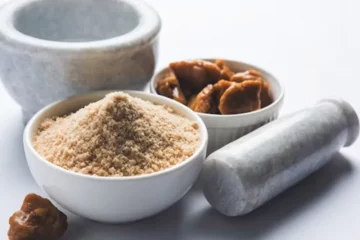Navratri fasting can be challenging when it comes to creating meals that are both satisfying and easy on the digestive system. Hing, also known as asafoetida, is a secret ingredient that elevates fasting recipes like Samak rice and Kuttu flour dishes. Here’s a comprehensive guide to using Hing in fasting recipes for delicious and healthy meals.
1. Is Hing Allowed During Navratri Fasting?
Short Answer: Yes, hing is generally permitted during Navratri fasting and follows traditional vrat rules, especially in powdered form.
Long Answer:
- Hing is considered sattvic, making it acceptable in most fasting traditions. Its powdered form is commonly used in vrat meals without violating religious rules.
- It enhances the flavor of bland fasting foods like Samak rice and kuttu flour dishes without adding onions or garlic, which are typically avoided during vrat.
- Hing is also believed to aid digestion and reduce bloating, making it a preferred spice during prolonged fasting periods.
- Traditional fasting cookbooks and recipes often list hing as an essential ingredient to maintain flavor while keeping meals light and healthy.
2. How Does Hing Improve the Taste and Digestibility of Samak Rice and Kuttu Flour Dishes?
Short Answer: Hing enhances taste and balances the dense or bland nature of Samak and Kuttu dishes while reducing bloating and heaviness.
Long Answer:
- Samak rice can be bland and earthy. Adding hing gives it a subtle aroma and a hint of savory flavor, making the dish more appealing.
- Kuttu flour, used in rotis or pakoras, is heavy on the stomach. Hing improves digestibility by stimulating digestive enzymes.
- The carminative properties of hing help prevent gas and acidity, common issues when consuming starchy fasting foods.
- It pairs well with other fasting spices like cumin, ginger, or rock salt to create balanced flavors without violating vrat norms.
3. What’s the Best Way to Use Hing in Vrat Recipes?
Short Answer: Temper hing in ghee with cumin or ginger before adding to dishes for maximum flavor and digestive benefits.
Long Answer:
- Heat a small amount of ghee in a pan and add a pinch of hing along with cumin seeds or grated ginger. This tempering releases the aroma and medicinal properties of hing.
- For Samak rice khichdi, add hing-tempered ghee to cooked rice along with roasted peanuts and mild spices.
- For Kuttu roti or pakoras, mix a pinch of hing directly into the dough or batter before cooking to enhance flavor.
- Adding hing at the end of cooking can sometimes reduce its aroma. Tempering at the start ensures it fully integrates into the dish.
4. Can Hing Help with Acidity or Gas During Fasting?
Short Answer: Yes, hing has carminative properties that help reduce acidity, gas, and bloating during fasting meals.
Long Answer:
- Foods like Kuttu flour and Sabudana are starchy and can cause indigestion. Hing aids by stimulating digestive enzymes and improving gut motility.
- It has mild anti-inflammatory properties that reduce gastric discomfort during fasting.
- Regular addition of hing to vrat dishes helps prevent bloating and supports smooth digestion.
- Combining hing with ginger or cumin enhances its effect on digestion, making fasting meals more comfortable for sensitive stomachs.
5. Are There Any Quick Hing-Infused Recipes Using Samak or Kuttu?
Short Answer: Yes, several quick recipes can be prepared under 20 minutes, including Samak rice pulao, Kuttu cheela, and Aloo-hing stir-fry.
Long Answer:
- Samak Rice Pulao: Cook Samak rice with water, hing-tempered ghee, roasted peanuts, green chilies, and mild spices. Ready in 15 minutes.
- Kuttu Cheela: Make a smooth batter of Kuttu flour, add grated ginger, a pinch of hing, and water. Cook on a non-stick pan for healthy crepes.
- Aloo-Hing Stir Fry: Sauté boiled potato cubes with ghee, cumin, hing, and rock salt for a quick, comforting side dish.
- Sabudana Khichdi: Soak sabudana for 2 hours, sauté with hing, peanuts, and mild spices. Ready in 20 minutes for a nutritious fasting meal.
Quick Reference Table: Hing Usage in Fasting Recipes
| Recipe | Hing Usage | Cooking Tip | Cooking Time |
|---|---|---|---|
| Samak Rice Pulao | Pinch, tempered in ghee | Add peanuts & mild spices | 15 minutes |
| Kuttu Cheela | Pinch in batter | Use non-stick pan for even cooking | 12 minutes |
| Aloo-Hing Stir Fry | Pinch, sauté with cumin | Use boiled potatoes | 10 minutes |
| Sabudana Khichdi | Pinch, tempered in ghee | Soak sabudana for 2 hours | 20 minutes |
Conclusion
Hing is an invaluable ingredient for fasting recipes. Its aroma, flavor, and digestive benefits make Samak rice and Kuttu flour dishes tastier and easier on the stomach. By tempering it correctly and pairing it with complementary spices, you can create quick, delicious, and Navratri-friendly meals. Incorporate Hing in fasting recipes to elevate both taste and health benefits during vrat periods.





